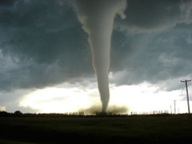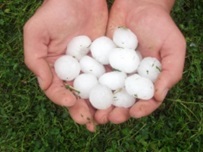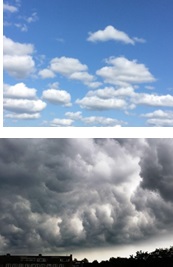Weather and Climate
1.How Are Hurricanes Formed?
- Hurricanes are deadly thunderstorms with strong, swirling winds. Hurricanes also bring rain with winds.
- When the hot air above the ocean rises upward, the space is replaced by the cooler air from the surroundings.
- Due to this, a gradual swirling wind current forms above the ocean, migrating towards the land and forming a hurricane.
2.How Are Blizzards Formed?
- Blizzards are severe snow storms.
- Snowfall starts when cold polar air comes in contact with hot air.
- Continuous snowfall, when accompanied by winds, lowers visibility and leads to snowstorms, a natural disaster.
- These storms may continue for many hours and can cause massive damage.
3.What Causes a Tornado? Are They Similar to Cyclones?

- A tornado is a spinning column of fast-moving air.
- A strong thunderstorm leads to the formation of a tornado.
- A tornado is not similar to a cyclone.
- A tornado forms only on land, whereas cyclones originate above the ocean and move toward the land.
4.Why Are Hailstorms Very Common in Spring?

- spring comes with longer day lengths and warmer winds.
- The polar cold air starts to clash with the warm and humid air coming from the tropics.
- Due to this, thunderstorms with hails occur in many parts of the Earth.
- Hail is formed due to the accumulation of super cooled water droplets that move upwards as water vapour. These water droplets transform into ice because of extremely low temperatures,
5.Why Do the Clouds on a Rainy Day Appear Dark and Huge Compared to a Normal Day?

- The rainy days are characterised by a humid and hot climate which increases the rate of evaporation of water.
- A lot of water droplets collect to make dense clouds during rainy days.
- As the number of water droplets increases, the Sun's light is scattered in different directions, and only a small amount of light reaches our eyes. This makes the clouds appear darker.
CBSE Schools In Popular Cities
- CBSE Schools in Bangalore
- CBSE Schools in Mumbai
- CBSE Schools in Pune
- CBSE Schools in Hyderabad
- CBSE Schools in Chennai
- CBSE Schools in Gurgaon
- CBSE Schools in Kolkata
- CBSE Schools in Indore
- CBSE Schools in Sonipat
- CBSE Schools in Delhi
- CBSE Schools in Rohtak
- CBSE Schools in Bhopal
- CBSE Schools in Aurangabad
- CBSE Schools in Jabalpur
- CBSE Schools in Jaipur
- CBSE Schools in Jodhpur
- CBSE Schools in Nagpur
- CBSE Schools in Ahmednagar
- CBSE School In Tumkur











